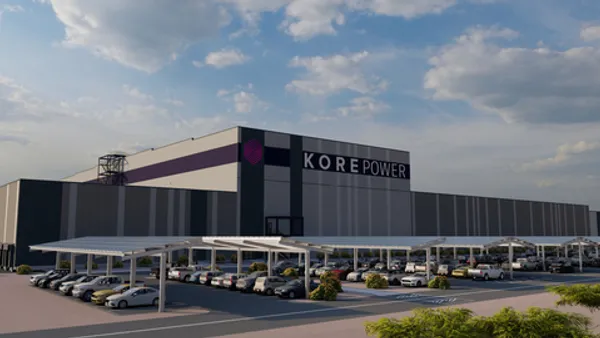Dive Brief:
- The White House announced strategies Tuesday to slash greenhouse gas emissions generated by climate super pollutants, which include methane, hydrofluorocarbons and nitrous oxide — gasses far more potent and harmful to the environment than carbon dioxide per ton.
- The Biden-Harris administration hosted a summit the same day, convening U.S. officials, environmental organizations, companies, philanthropic organizations and others to discuss how to “dramatically reduce” emissions from such pollutants.
- Solutions proposed included enhanced monitoring through commercial aircrafts and satellites, installation of thermal reduction units to eliminate onsite nitrous oxide emissions and methane leak detection and sensing technologies backed by the Environmental Protection Agency’s Methane Super Emitter Program.
Dive Insight:
Climate super pollutants play a major role in increasing global temperatures as most of them are warming agents able to trap the Earth’s heat, according to the Climate and Clean Air Coalition. Some pollutants can also exacerbate climate change through altering atmospheric chemistry by increasing the levels of methane or carbon monoxide present, per the United Nations-backed initiative.
These pollutants are emitted from almost every industry globally, including fossil fuel production and distribution; power generation; agriculture; waste management; transportation and logistics; building facilities and more, according to the coalition.
“Half of today’s climate change is caused by super pollutant greenhouse gases,” the White House said in a press release. “Slashing emissions of these super-pollutants is the fastest way to tackle climate change and a critical complement to reducing carbon dioxide.”
Tuesday’s meeting concluded with several super pollutant detection and abatement strategies and proposals. United Airlines and the National Oceanic and Atmospheric Administration’s Global Monitoring Lab announced a collaboration that would leverage commercial aircrafts to boost monitoring of climate pollutants such as methane, carbon dioxide and carbon monoxide.
The State Department and the National Aeronautics and Space Administration also proposed a monitoring system. The pair committed to deploy 10 sensors to U.S. embassies and consulates that are able to measure the ozone layer and provide data that can be used to improve climate and air quality satellite capabilities and help develop an ozone forecasting model.
Corporations also stepped in with solutions to address the super pollutant issue, per the White House’s press release. Ascend Performance Materials, which is the largest U.S. producer of adipic acid — most commonly used as an acidifier, gelling aid and sequestrant in food and confectionery products — unveiled plans to install an additional thermal reduction unit at its Florida facility to eliminate nitrous oxide emissions.
Global sustainability company ClimeCo, which focuses on low carbon solutions such as carbon offsets, renewable energy and water quality credits and air pollutants — announced three super pollutant mitigation projects that aim to reduce nitrous oxide at three facilities by 95%, slated to come online in 2025.
“Abating super pollutants is a crucial step in climate mitigation due to their potent warming effects and shorter atmospheric lifetimes compared to CO2,” ClimeCo’s Executive Vice President of Commercial Emma Cox said in an emailed statement to ESG Dive Thursday. “Reducing [these] emissions can lead to rapid and substantial climate benefits, improved air quality, and better public health outcomes.”












